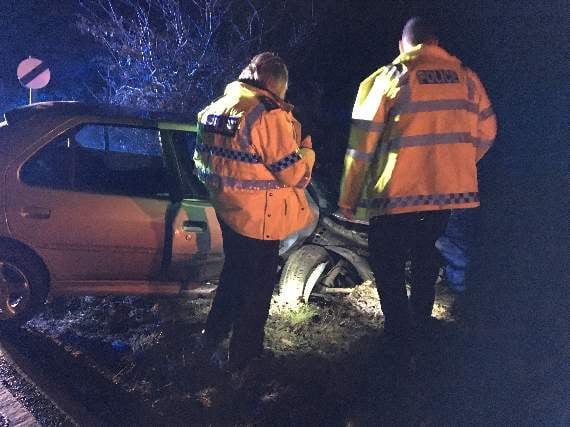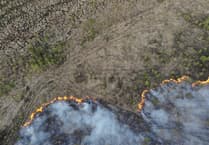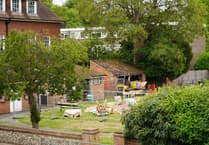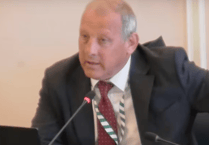POLICING in Farnham has changed beyond recognition in recent years. Farnham police station, once a key landmark in the town’s street scene and public life, closed in 2011, Farnham’s neighbourhood team relocated to the fire station and, as of next month, the town’s nearest police front counter will relocate from Godalming to Guildford.
However, the biggest shift to the way the town and surrounding area is policed is perhaps less obvious, coming with the introduction of Surrey’s new Policing in Your Neighbourhood (PIYN) model in 2016 which - as well as dramatically restructuring the force and the way crimes are responded to and investigated - also ushered in a new wave of technology that has changed the face of policing in Surrey forever.
Through a series of articles in coming editions, the Herald hopes to challenge the perception that funding cuts have robbed Farnham of a police presence, and unveil how modern demands and technology have brought about the biggest change to crime-fighting in the town in decades - starting with an account of a night in the life of the West Surrey response team.
On Friday, January 26, Herald chief reporter Daniel Gee was invited to join Chief Inspector Terri Adderley and Pc Paul Armer on what promised to be a busy Friday night shift responding to 999 calls. What unfolded gave a remarkable insight into both modern policing, as well as the skill and dedication of officers, their team spirit and compassion for victims.
• 7pm: Our night began, as do all shifts for West Surrey’s response team, with a briefing at Guildford Police Station and an overview of the night’s ongoing incidents and priorities. This includes an update on Waverley’s ongoing burglary issue and seven missing persons each ranked low, medium or high risk.
• 7.30pm: We leave the comfort of the office and Terri, who is required to spend at least one shift “in reality” a month but in practice works two or three, and Paul are on the road, heading along the Hogs Back towards Farnham to “sit on the area” waiting for an emergency call.
“This time of night a lot of it is just waiting for the calls to come in, you see what you see and stop any vehicles that look suspicious,” Paul explained, driving slightly below the speed limit to keep traffic moving.
“It usually gets busy come 2am when the pubs kick out. After that, past 3am, that’s when your local oiks might be out trying to steal plant or doing ATM breaks, so I like getting out into the outlying areas and just looking for what’s around.
“Last night we were in Tilford, a very quiet area, and this tiny little Fiesta came absolutely bowling past us and even though I was in a three litre BMW I really struggled to keep up with it. He was drunk at the wheel so we had him, and then we found some drugs on him as well.
“That was just because we were in that area, and one of his first words to us was ‘I can’t believe you got me tonight, the police are never around here’. It just shows, you’ve got to be in it to win it.”
• 8pm: Once in Farnham, the first port of call is the fire station in Guildford Road, where the Farnham neighbourhood team has been based since the closure of the town’s police station in Longbridge in 2011.
There we find PCSO Richard Platt, one of three PCSOs assigned to Farnham, and two of Waverley’s dedicated neighbourhood Pcs getting ready to hand over to the next shift.
Unlike many other forces around the country, Surrey has retained its funding and commitment for PCSOs - thanks largely to DCC Gavin Stephens’ passion for neighbourhood policing - whose job is to go out into the community, speak to people, put names to faces and tackle the chronic, long-term issues affecting the community - in PCSO Platt’s words to be a “neighbourhood celebrity”.
• 8.21pm: As we’re leaving the fire station, Paul casually remarks “the radio’s quiet tonight” - not a moment before the first 999 call of the night comes in, reporting an “RTC” (road traffic collision) “involving two cars on the A287 north of Frensham Pond. Injuries unknown.”
The heart races and within seconds of pulling out of the fire station, the blue lights are on and the siren wailing as we weave through Farnham town centre and The Bourne and out into the countryside south of the town, still not knowing what awaits on the road ahead.
Paul cooly explains as he hares along the A287 that his first priority is “to not add to the accident” which could, as far as he knows, be just around the next blind bend. But as it happens, it is not until we get on the straight running past the Great Pond that we see caution lights blinking in the distance.
• 8.30pm - The first car we see is a Saab - stricken on the side of the road and heavily damaged with its driver-side front wing and steering column decimated and the air-bag deployed. There are no signs of any badly injured parties however, and we drive on over debris and broken glass before reaching the second vehicle, a Peugeot 306, crashed into a ditch 50 metres further down the road.
The Peugeot appears equally, if not more damaged than the Saab, with its occupant, a 34-year-old man, huddled nervously in blankets on the crushed bonnet of his car - again not obviously hurt but clearly shaken.
Paul positions his response car on the opposite side of the Peugeot to protect the crash scene from oncoming traffic, and together with Terri goes to check for any injured parties, assess the wreckage and who is to blame.
Straight away they make two snap judgements. First that both drivers are incredibly lucky to escape serious injury. And second, that “something is not quite right” about the younger driver of the Peugeot, who they suspect is “off his face on something” judging by his skittish behaviour, “blown eyes” and sachets of citric acid, often used to prepare heroin, found on the ground near the stricken Peugeot.
A quick search of the police mobile data terminal (MDT) on his phone then tells Paul that the 34 year old has a record of “opiate addiction, mental health issues and violence”. However, as we would later discover, suspicion is one thing, but proving that the young man was driving under the influence of drugs is another.
The man claims he was a heroin user “years and years ago” and blames the crash on the driver of the Saab failing to dip his headlights, also revealing that he is on antidepressants which Paul concedes could explain his behaviour. The older male driver of the Saab contests his account however, claiming that the Peugeot “just veered into me”.
• 8.46pm: A third police officer, one of the Pcs we had earlier met at Farnham fire station, arrives to seal off the other end of the scene by the Saab, followed by a South East Coast Ambulance Service crew who, equally amazed at the lack of injuries, treat the driver of the Peugeot for a minor ankle injury and reinforce Paul’s suspicion, commenting “it looks like he’s taken something”.
• 9.10pm: A third police officer from Surrey’s road policing unit then attends at Paul’s request to test the driver of the Peugeot using a DrugsWipe roadside testing kit. Though able to test for cannabis and cocaine, DrugsWipe, which was first introduced in Surrey in 2015, cannot detect opiates such as heroin, and it therefore comes as no surprise when the young driver’s test returns a negative result.
This leaves Paul with a decision to make - to leave the young driver in the hands of the ambulance crew and his insurance company and refer the crash to the force’s accident investigation department. Or to arrest him on suspicion of driving under the influence of drugs and escort him to hospital for a blood test in the knowledge that this would be “us written off for the shift”.
“It’s a hard one to call,” he admits, “and we could spend the whole night in A&E for not a lot of gain. We’ve all got a good suspicion, but it’s a case of proving that drug use contributed to the crash.”
• 9.40pm: After deliberating with his colleagues, Paul’s mind is suddenly made up when, unfurling the young driver’s blankets, the ambulance crew reveal a suspicious brown parcel containing a bounty of Class A drug paraphernalia from clean needles to spoons and more sachets of citric acid.
Paul arrests the Peugeot driver on the spot under Section 4 of the Road Traffic Act 1988 and together we follow the ambulance containing the suspect and Terri as it snakes its way towards the Royal Surrey.
“As soon as I saw the parcel, I knew we’ve got to go and do the bloods now,” Paul said. “Straight away that was enough - he’s an intravenous drug user.”
The next step Paul explained would be to send off the suspect’s blood test for analysis, “usually about a six-week turnaround”, during which time the 34 year old would be released under investigation. If the test returns positive, he would be charged and taken to court. If negative then there would likely be no further action.
• What wasn’t considered on the way to hospital, however, was the third possible result - that the driver had abused his body to such an extent that medical staff would be unable to draw blood from him and, with no evidence, Paul and Terri would be forced to let him walk free.
Confirming this result the following day, Terri told the Herald: “We stayed at hospital with the driver for several hours but unfortunately due to habitual drugs use the medical staff were unable to draw blood from him. Very unfortunate for the other driver!”
Not only was this of immense frustration to Paul and Terri personally, having wasted their night waiting in hospital for a blood test that would never arrive. But also on behalf of the driver of the Saab who, through possibly no fault of his own, was just feet away from a potentially life-ending crash.
Paul continued: “This is the thing tonight, not only was I thinking of this chap who we wanted to try and get for something, but also that poor bloke in the Saab that we think was rammed, to give him some justice.
“You can’t help thinking that this lad in hospital probably doesn’t pay taxes, hasn’t even got a job, he’s a bit of a leech on society, a drug taker, he’s got form with the police. And then the poor decent chap whose worked all his life, coming home and he gets wiped out.
“This job does frustrate you sometimes.”





Comments
This article has no comments yet. Be the first to leave a comment.